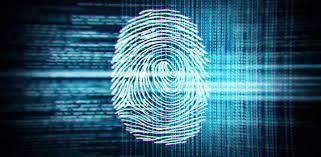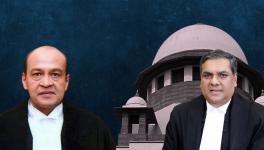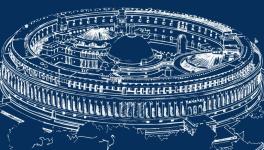By allowing unregulated collection of biological samples or behavioural traits of individuals by executive agencies, the Bill violates the fundamental right to equality, the fundamental right against self-incrimination, and the fundamental right to privacy provided by the Constitution of India.
——
The Criminal Procedure (Identification) Bill, 2022, which authorises investigating officers, namely prison officers or the police, to collect sensitive and personal biometric data, defined as ‘measurements,’ of prisoners, has been passed by both the Lok Sabha and the Rajya Sabha this week.
Biometric data to be collected under this Bill includes physical and biological samples such as fingerprint and palm print impressions, iris and retina scans, and photographs. It also proposes to collect behavioural traits, including handwriting and signatures.
A regulatory and scientific examination of the Bill clearly indicates grave constitutional violations as it falls short of the fundamental right to equality (provided by Article 14), the right against self-incrimination (provided by Article 20(3)), and the right to privacy (provided by Article 21) of the Constitution of India.
The Bill warrants significant concern over excessive delegation of power to various functionaries and authorities under the Bill, including prison officers and the police. An unreasonable classification is also created by the Bill between classes of persons who may and who may not be compelled to give their sensitive personal information. Further, numerous other provisions fail to lay down any principle that may justify this classification presenting arbitrariness.
Including the collection of data related to behavioural traits poses a violation of the right against self-incrimination as such collection can constitute measurements amounting to a testimonial nature. Coercive collection of such samples solidifies the violation of Article 20(3).
The Bill poses grave violations of the right to equality under Article 14 of the Constitution. These range from unreasonable classification to arbitrariness. Further, it delegates legislative authority to the executive excessively in a manner that violates Constitutional provisions.
The concern expressed over the privacy of the data collected under the Bill is undoubtedly significant. It disregards the doctrine of proportionality laid down by the Supreme Court in Justice K.S. Puttaswamy vs. Union of India (2017). Moreover, there is no rational connection between what the Bill aims at and the persons who are forced to provide their measurements under the Bill, which renders the Bill ineffective for reaching those aims.
Also read: Decoding the Criminal Procedure (Identification) Bill, 2022
Violation of the right to equality
The Bill poses grave violations of the right to equality under Article 14 of the Constitution. These range from unreasonable classification to arbitrariness. Further, it delegates legislative authority to the executive excessively in a manner that violates Constitutional provisions. The Bill is prima facie arbitrary and authorises functionaries to exercise wide and unchecked discretionary powers.
The Bill enables the police and the prison officers to collect, store, and share certain measurements, and the collection, storing, destruction, processing, and dissemination of records of these measurements by the National Crime Records Bureau [NCRB] if it serves the interest of preventing, detecting, investigating, and prosecuting offence under the law.
The Bill delegates excessive powers to the executive in the following manner: first, by providing the executive with wide rule-making powers without any guidance, and second, by empowering functionaries such as the police and prison officers to decide who they may compel to give measurements.
Clause 3 of the Bill provides that a police or prison officer shall take measurements of persons listed thereunder of their own accord, or under Clause 5 on the order of a Magistrate. Such measurements shall be taken under clause 3 and 5 if it is so “required” or is “expedient” respectively. The Bill, however, fails to lay down what circumstances may or may not classify as ‘required’ or ‘expedient.’ Further, the manner in which these measurements are to be taken shall be prescribed by the Rules made by the Union and state governments. However, there seems no limit to the wide exercise of the discretionary powers in the absence of any guidance on the circumstances or process for compelling a person to provide their measurements.
Under the Bill, two levels of storing, preserving, and sharing measurements have been established. At the level of states and Union Territories [UTs], notified agencies are authorised to collect, store, preserve, and share the measurements provided. At the central level, the NCRB is authorised to collect, store, preserve, destruct, share, and distribute the measurements provided by the states and UTs. The Bill, again, fails to guide the executive on exercising such powers and entrusts the union and state governments to provide for the procedural safeguards, despite its serious implications on privacy.
Does the classification on the basis of the gender and age of the victim, or the punishment imposed for the offence, serve the aim of determining the utility of the measurements collected or aid the effectiveness of the investigation of the crime? How does one determine that collection of prescribed measurements benefits the investigation of crimes where the victims are women or children or where the offence is punishable with imprisonment for a period of seven years or more?
The absence of the (i) purpose for which the measurements are to be collected, stored, preserved or shared, (ii) nature of the analysis of such measurements, (iii) manner of processing such measurements, (iv) functions and duties of the State-notified agencies and the NCRB, (v) purpose of disseminating and accessing measurements, and (vi) period for which such measurements shall be retained, and grounds for their removal and destruction, are all procedural safeguards that the parent statute must itself lay down to eliminate the arbitrary and excessive rule-making power of the executive.
In the In re The Delhi Laws Act, 1912 (1951) case, the Supreme Court held that the legislature does not have the power to relinquish its legislative functions, and while it is delegating its powers, it must refrain from making the executive a parallel legislature. The power to figure out the details can be delegated to the executive but for it to function within its limits, it is important that standards are established by laying down a broad policy. It is imperative that the Bill itself prescribes a limit to the powers granted to the executive and the functionaries, or at the very least, indicates a broad perimeter within which these powers shall be exercised. In the absence of the same, the Bill is ultra vires the Constitution.
Clause 3 of the Bill does not envision all persons belonging to the class of persons enlisted thereunder to provide their measurements. Only those persons who the police or prison officers believe are required to provide the measurements shall be compelled to do so. In the absence of any provision which lays down any criteria or principle through which such a requirement can be examined, it is safe to say that the Bill is prima facie arbitrary. In stark comparison, provisions under the Code of Criminal Procedure (CrPC), 1973, lay down that a police officer may examine an accused only if they are satisfied that grounds exist for believing that the examination of such accused will lead to evidence as to committing an offence.
Further, clause 5 of the Bill allows the Magistrate to take measurements of “any person” if they think it is expedient for any investigation or proceeding. Such person, however, is not afforded the opportunity to have the same destroyed or removed. Clause 4 of the Bill only provides for the destruction of the records of measurements of the persons who were arrested but have been acquitted, released without trial, or discharged. Such differentiation is not based upon a determining criteria or principle and is, therefore, arbitrary.
Under Clause 6 of the Bill, a police or prison officer can lawfully take measurements in the manner as prescribed by the Rules if the person refuses or resists taking such measurements. Further, such resistance or refusal to allow taking such measurements shall constitute an offence under Section 186 (obstructing public servant in discharge of public functions) of the Indian Penal Code, 1860. As stated earlier, taking such measurements is entirely the discretion of the police or prison officer or Magistrate. As a result, the failure of clause 6 to lay down any grounds for refusal or resistance to guide an individual, is prima facie arbitrary.
Unreasonable classification
In Shri Ram Krishna Dalmia vs. Justice S.R. Tendolkar (1958), the Supreme Court laid down the test for a classification to be determined as reasonable. First, the foundation of the classification must be intelligible differentia that distinguishes the classes; and second, there must be a rational nexus between the differentia and the objective of the Act. Therefore, it is important to examine the classification made by the Bill and its objective in light of this test.
The classification made under clause 3 of the Bill is a class of person who has been arrested for an offence committed against a woman or a child or is punishable with imprisonment for a period of seven years or more. This class of persons shall be compelled to give their measurements to the police or any prison officer. The other class of persons, that is, persons arrested for an offence that is not committed against a woman or a child and is punishable with imprisonment for a period less than seven years, shall not be compelled to give their measurements. The classification of the arrested persons is based on the gender and the age of the victim and the punishment imposed for the offence.
The aim of the Bill, as per the Statement of Object and Reasons of the Bill, is to gather sufficient evidence that is legally admissible, and establish the commission of a crime by the accused person and expedite the investigation of the crime.
The question that must be asked is this: does the classification on the basis of the gender and age of the victim, or the punishment imposed for the offence, serve the aim of determining the utility of the measurements collected or aid the effectiveness of the investigation of the crime? How does one determine that collection of prescribed measurements benefits the investigation of crimes where the victims are women or children or where the offence is punishable with imprisonment for a period of seven years or more? It is the nature of the offence and specific circumstances surrounding each case that determine whether the collection of biological samples or behavioural traits will aid and expedite the investigation.
Violation of the right against self-incrimination
‘Measurements,’ as defined under Clause 2(1)(b) of the Bill, and especially the term ‘behavioural attributes’, can be interpreted to be of a testimonial nature. ‘Behavioural attributes’ may be construed to mean its ordinary meaning including handwriting, signatures, and any other measurements as stated under Sections 53 and 53A of the CrPC.
Since the police or a prison officer or the Magistrate are empowered to compel a certain class of person to give measurements, various evaluation methods of psychiatric nature might also be employed. These may include polygraph tests, brain-mapping, and narco-analysis, all of which were explicitly prohibited by the Supreme Court in Selvi vs. State of Karnataka (2010). If such evaluation leads to an admission that is incriminating, it would constitute a violation of Article 20(3) of the Constitution.
Violation of the right to privacy
The Supreme Court, in Puttaswamy, held that the right to privacy is a fundamental right under Article 21 of the Constitution. In Puttaswamy vs. Union of India (II) (2018), the Supreme Court held that informational privacy, including biometric data and other personal information, forms part of the right to privacy under Article 21.
If an infringement of the right to privacy satisfies the test of the doctrine of proportionality as laid down in Puttaswamy II, it can be said to be constitutional. The doctrine of proportionality constitutes a (i) legitimate aim, (ii) suitable means, (iii) necessity of means, and (iv) proportionality stricto sensu.
The Bill has a legitimate aim of an improvement in investigating, detecting, and preventing crimes, but it falls short of satisfying the other three requirements of the doctrine. As stated earlier, it is hard to comprehend how the classification made under the Bill by clause 3 connects to aid the investigation. Further, compelling “any person” to give their measurements under clause 5 does not specifically aid the investigation of a crime either. Therefore, since no rational nexus between the provisions of the Bill and its aim can be established, it is safe to say that the Bill is not a suitable means to achieve its legitimate aim.
Provisions such as these that rely upon the collection, storage, preservation, sharing, and dissemination of sensitive personal information must be introduced only after a data protection law is in place to deal with potential breaches.
The extent of infringement of the right to privacy posed by the Bill is not necessary to achieve the legitimate aim of the Bill. Clause 5 of the Bill provides for the collection of measurements from any person as long as the Magistrate believes it is expedient to do so for any investigation or proceeding under the CrPC or any other law. The provision does not require that the person from whom such measurements are being taken is even remotely connected to such investigation or proceeding or is a suspect. There is no evidence to support the claim that an extensive and wide database aids the prevention, detection, and investigation of a crime.
Clause 4 of the Bill provides for the storing of the record of measurements but fails to elaborate upon the purpose of storing such data. In the absence of an explicitly stated purpose for which such record may be used, significant infringement of privacy of an individual can take place through the wide and ambiguous powers of the authorities. The measurements collected under the Bill (even of persons who are not involved in criminal investigation or proceeding, or are a suspect) can also be used to access digital and physical belongings of an individual, including electronic devices (such as mobile phones and computers).
The sensitive personal information collected, stored, preserved and shared under the Bill must be relevant and limited to the purpose for which such information is collected and stored. Further, the Bill provides for the collection of all measurements, and not just the measurements that may be proportionate or relevant to the offence that has been committed. In conclusion, the Bill impacts the right to privacy of an individual disproportionately and for this, and the reasons stated above, infringes Article 21 of the Constitution.
Also read: Shifting stakes of privacy
The concerns over the privacy and safety of the record of measurements is not unfounded. Provisions such as these that rely upon the collection, storage, preservation, sharing, and dissemination of sensitive personal information must be introduced only after a data protection law is in place to deal with potential breaches. It is the responsibility of each organ of the government to protect the autonomy of every individual. Grave violations of the Constitution must not be treated as mere academic debates, as they can have severe consequences.

























